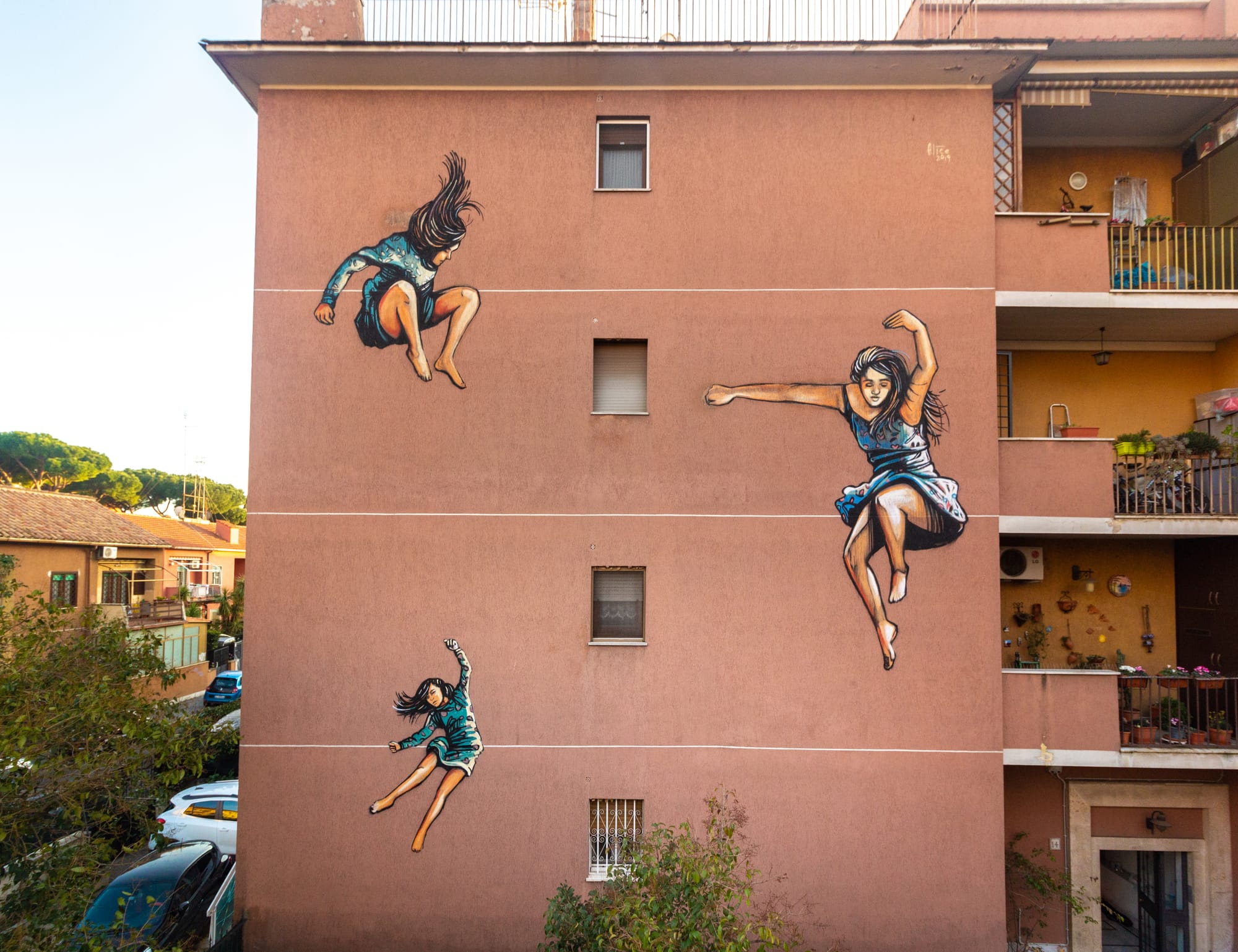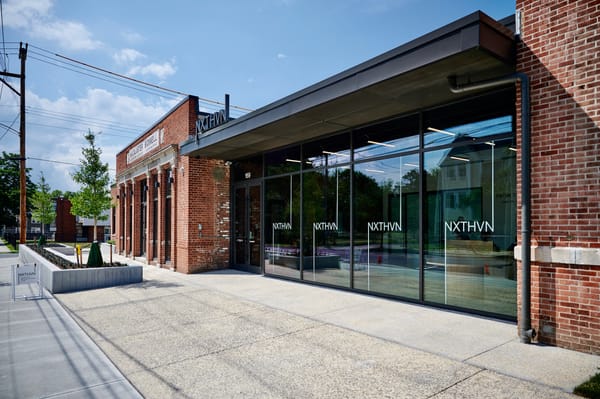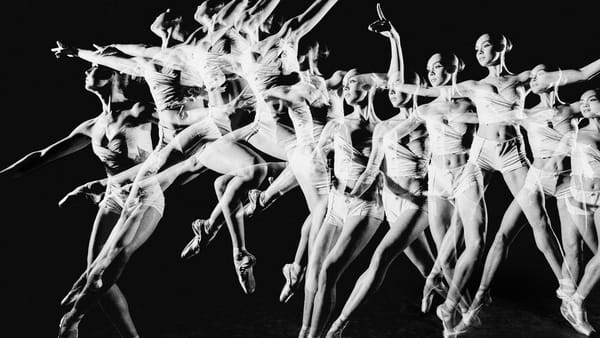The Renegades Making Feminist Art In the Streets
Despite its countercultural status, street art remains male-dominated. Hyperallergic sought out some femme and nonbinary street artists to hear about their experiences.
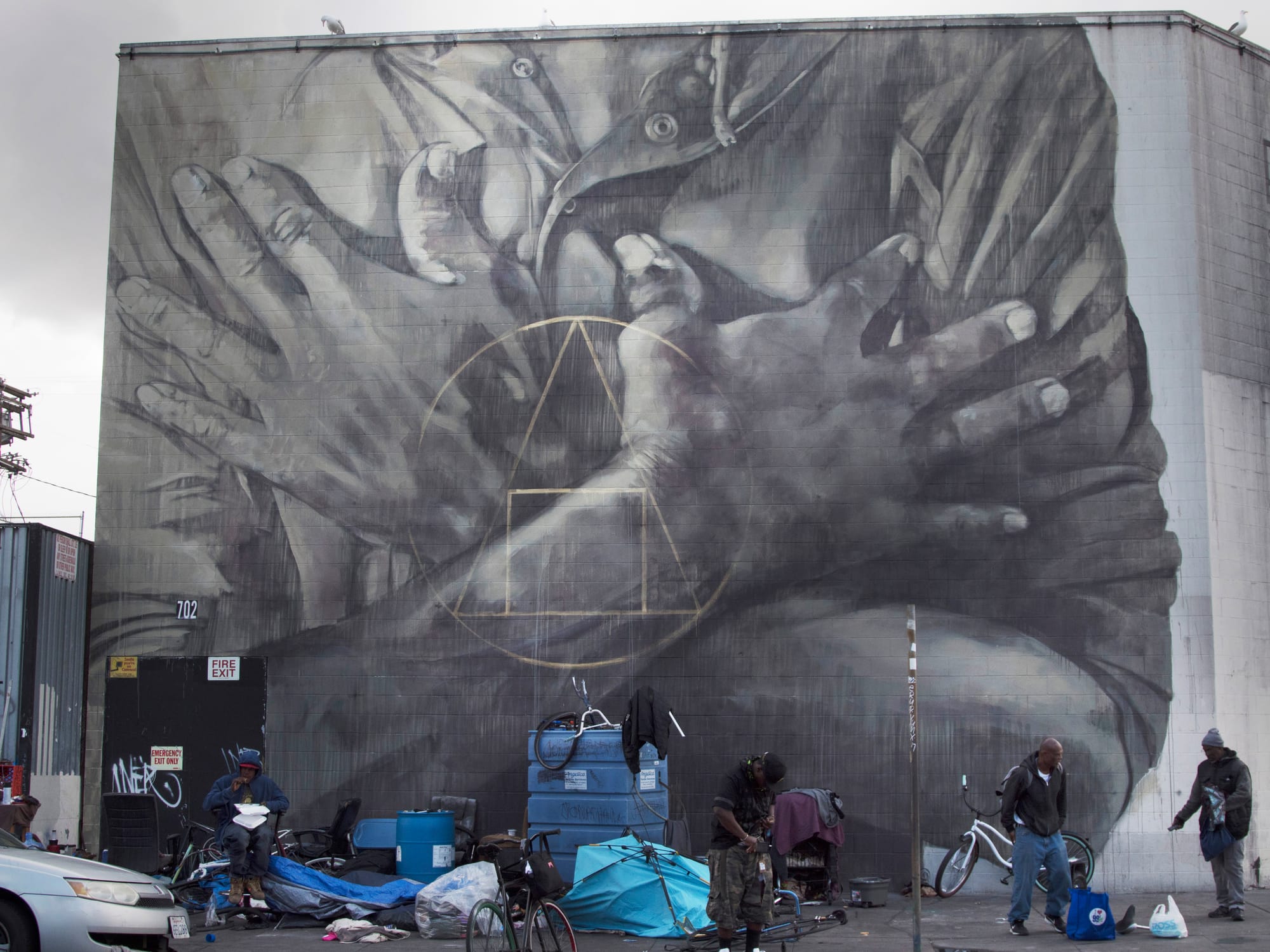
Fringe in its genesis in graffiti, street art can occupy municipal space and attention in a manner both subversive and democratic in its presentation and process. While it nods to a variety of forms, from Minimalism to Surrealism, it has not historically been taken seriously by the mainstream. This marginality enables street art to stay disruptive, full of potential to give marginalized narratives a public face.
Yet even in this countercultural niche, street art remains male-dominated. (Often, this is excused through alleged concerns around safety, due to its illicit nature in urban spaces at odd hours.) And much of what does constitute recognition for femme or nonbinary street artists rarely extends to people of color. To help combat this oversight, I sought out some talented femme, nonbinary, and/or queer artists who weave ideas around identity into their work.
This roster of profiles is neither exhaustive nor all-encompassing. For instance, there’s also Tatyana Fazlalizadeh, “a Black/Iranian visual artist” who uses “visual art to address the daily oppressive experiences of marginalized people” through painted portraits in galleries and the street. Shamsia Hassani, “one of Afghanistan’s first female street artists,” creates vibrant murals that paint “women as strong independent figures.” Alexandra Bell is “a multidisciplinary artist who investigates the complexities of narrative, information, consumption, and perception” (her work long decorated the facade of Bed Stuy’s Playground Coffee Shop). Be sure to check them out.
Sam Kirk
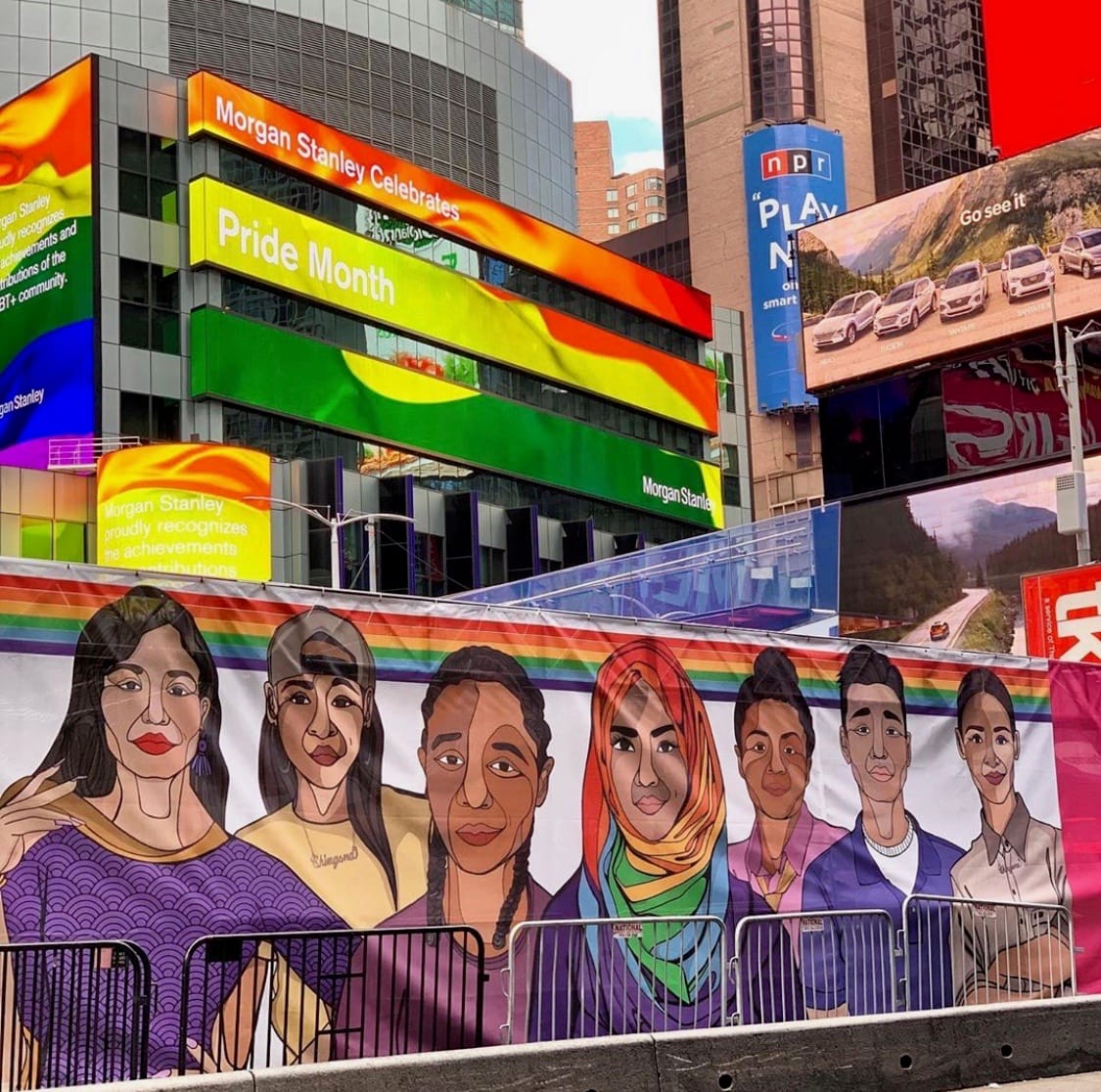
Sam Kirk paints a swirl of magenta hair below a rendering of the Brooklyn Bridge. Often collaborating with her wife, she likes to incorporate people from all walks of life into her work. She’s quick to tell me how one of her favorites (a large-scale commission in Times Square for World Pride) incorporates a diverse swath of identities: women in rainbow hijabs, nonbinary and trans folks, rare public representations of love between women of color. Working with a variety of organizations, she hopes to impart how impactful seeing oneself in a civic space can be for women of color and the LGBTQ+ community — to lead by example in being “proud to be all those things.”
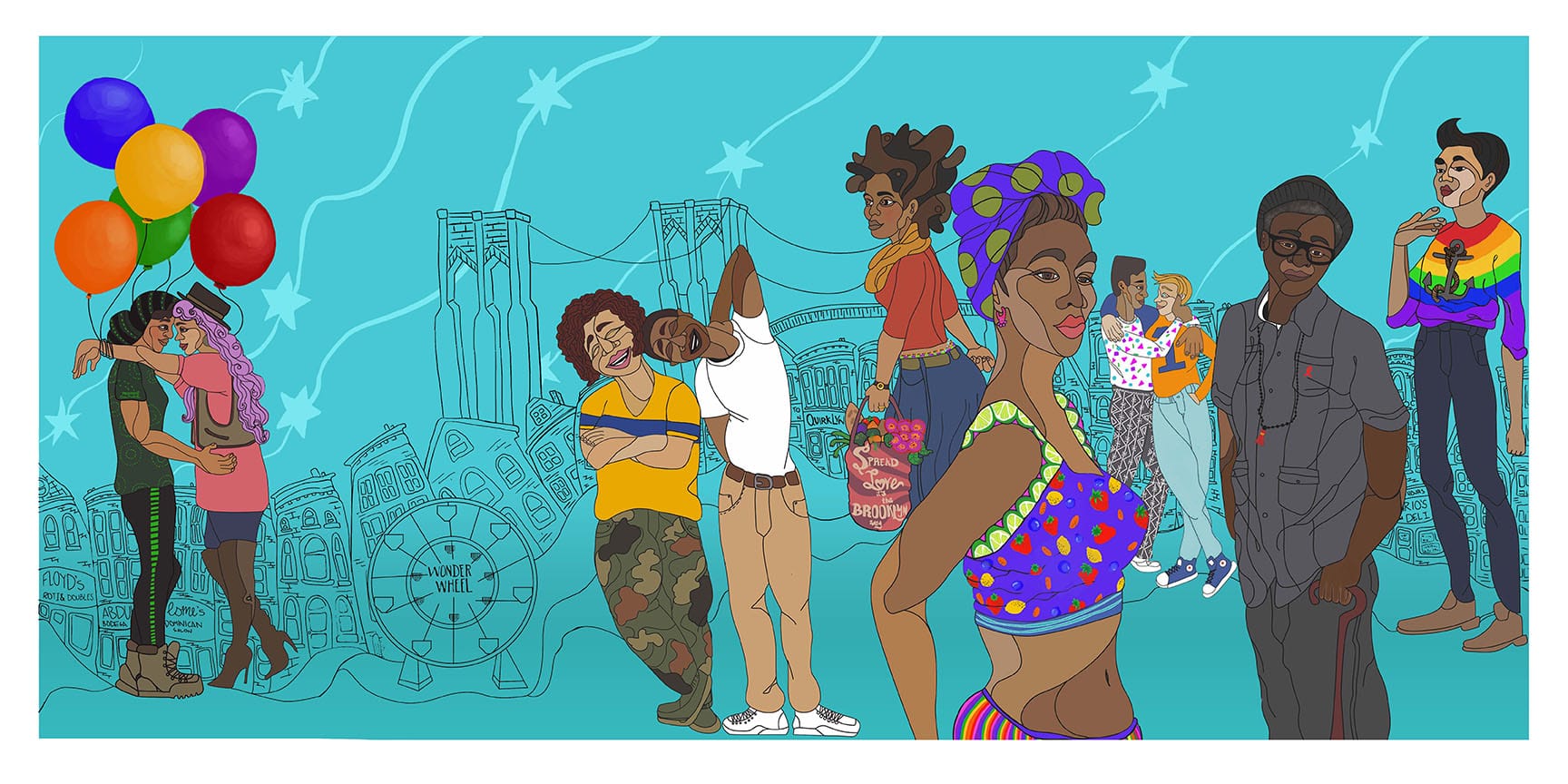
Kirk started out on a very different path, in marketing, but art commissions kept rolling in. Her work as a street artist picked up speed until it overtook her 9-5. But her roots are apparent in her art. As a queer woman often on the receiving end of hate crimes, growing up on Chicago’s South Side with a dearth of representation inspired her to paint that representation onto the walls of public spaces. But in 2019, obstacles still exist. Property owners in parts of Boystown in Chicago, and even in Harlem, didn’t approve of pieces she proposed. But Kirk perseveres. Following her mural for the Lisa Project commemorating Victoria Cruz on the 50th anniversary of Stonewall, Kirk intends to donate some 350 feet of banner (broken up into around 20 individual posters) plastered around Times Square for World Pride to LGBTQ+ centers around the country that may not have the funds to commission such work.
Jilly Ballistic
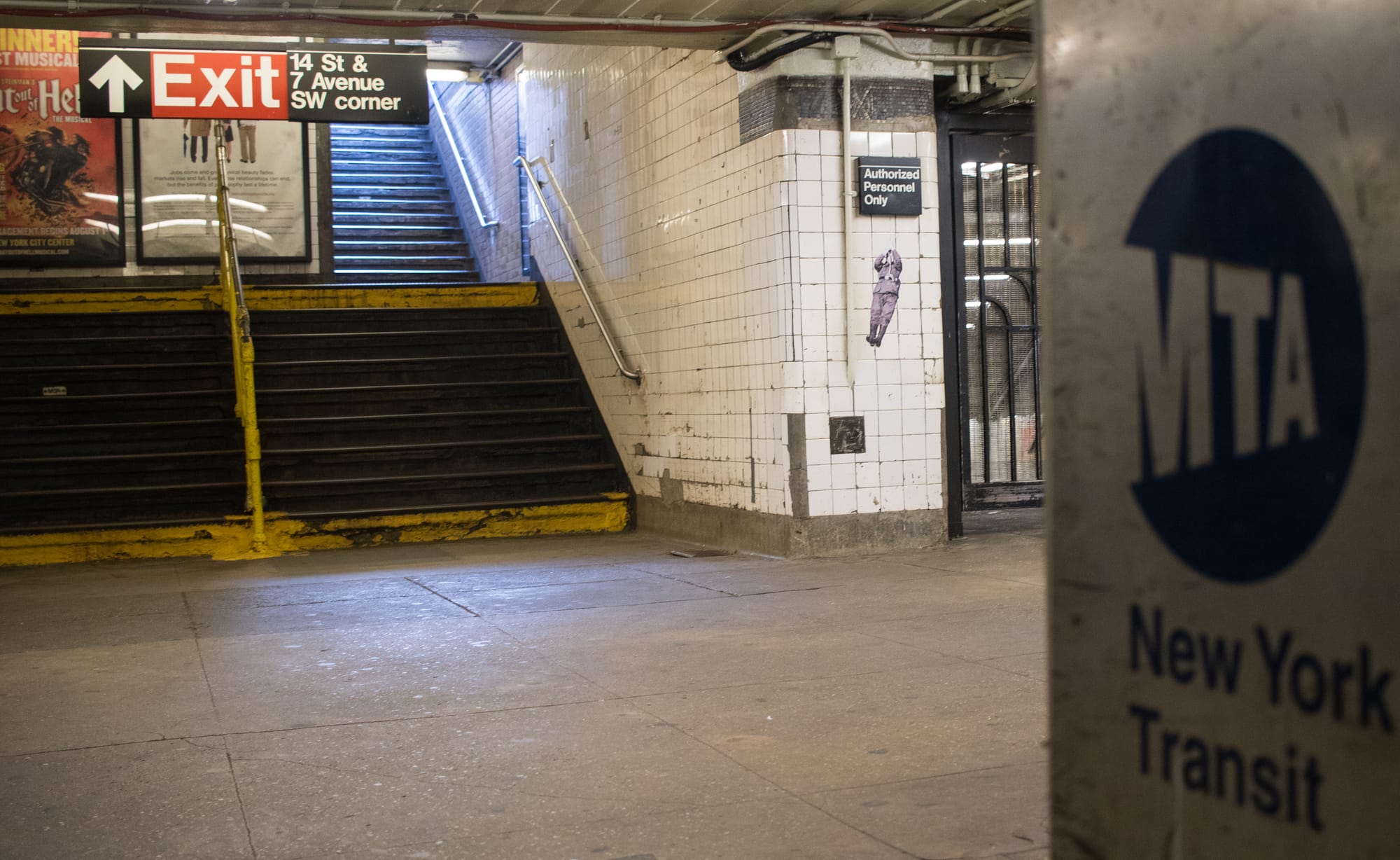
FREE PRESS KILLS FASCISM — Jilly B. is scrawled at the base of the subway stairs at Montrose Ave. FREE the KIDS. CAGE THE WHITE NATIONALISTS — JB floats against a black backdrop surrounded by subway tiles in the 36th St Queens-bound M/R in Astoria. At Christopher Street, Stonewall was a riot, be the brick drips in white spray paint — Jilly Ballistic’s signature style. More Dykes / Fewer Walls bookend a trashcan at the Morgan Ave Brooklyn-bound L. None of it is commissioned, or legal. (She tells me she was actually arrested once, but managed to keep her day job.)
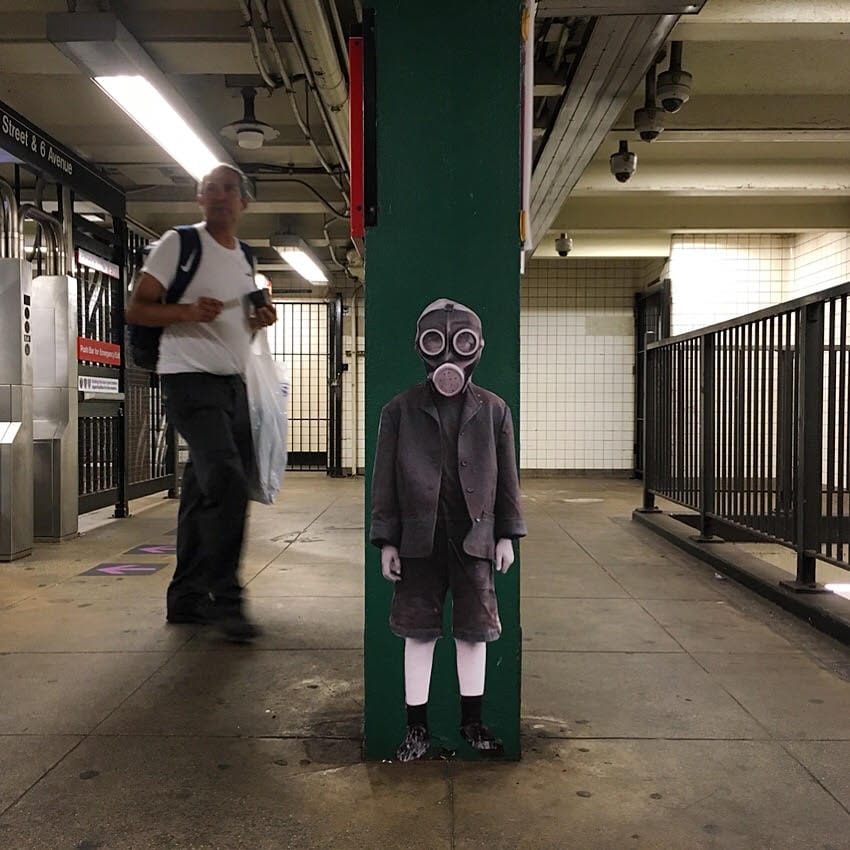
Coming from a background as a writer, Jilly B, billed as “Patron Saint of the Underground,” pastes up subway witticisms and apocalyptic WWII imagery that act as satirical critique. Although Ballistic adds that many of her works were conceived earnestly, “as a response to political news: Syrian violence, trump rolling back environmental laws, the Supreme Court deciding LGBTQ+ rights.” Her sprawling letters often even critique her own line of work. Tags such as “commodity” scribbled in gold paint beneath a crossed-out “graffiti” indict the mainstream appropriation of the form, such as how galleries charge $25 a ticket to display once-free urban works.

Ballistic started out writing guerrilla ads for work on trash days as installations in and around Brooklyn, where she’s from. Since then, she’s collaborated with the likes of The Dusty Rebel on the forthcoming street art documentary Out On the Street, been in exhibitions like Of Women, By Women, and tagged the streets, walls, and subways (her favorite) of Portland, Austin, LA, and even Honolulu.
Alice Mizrachi
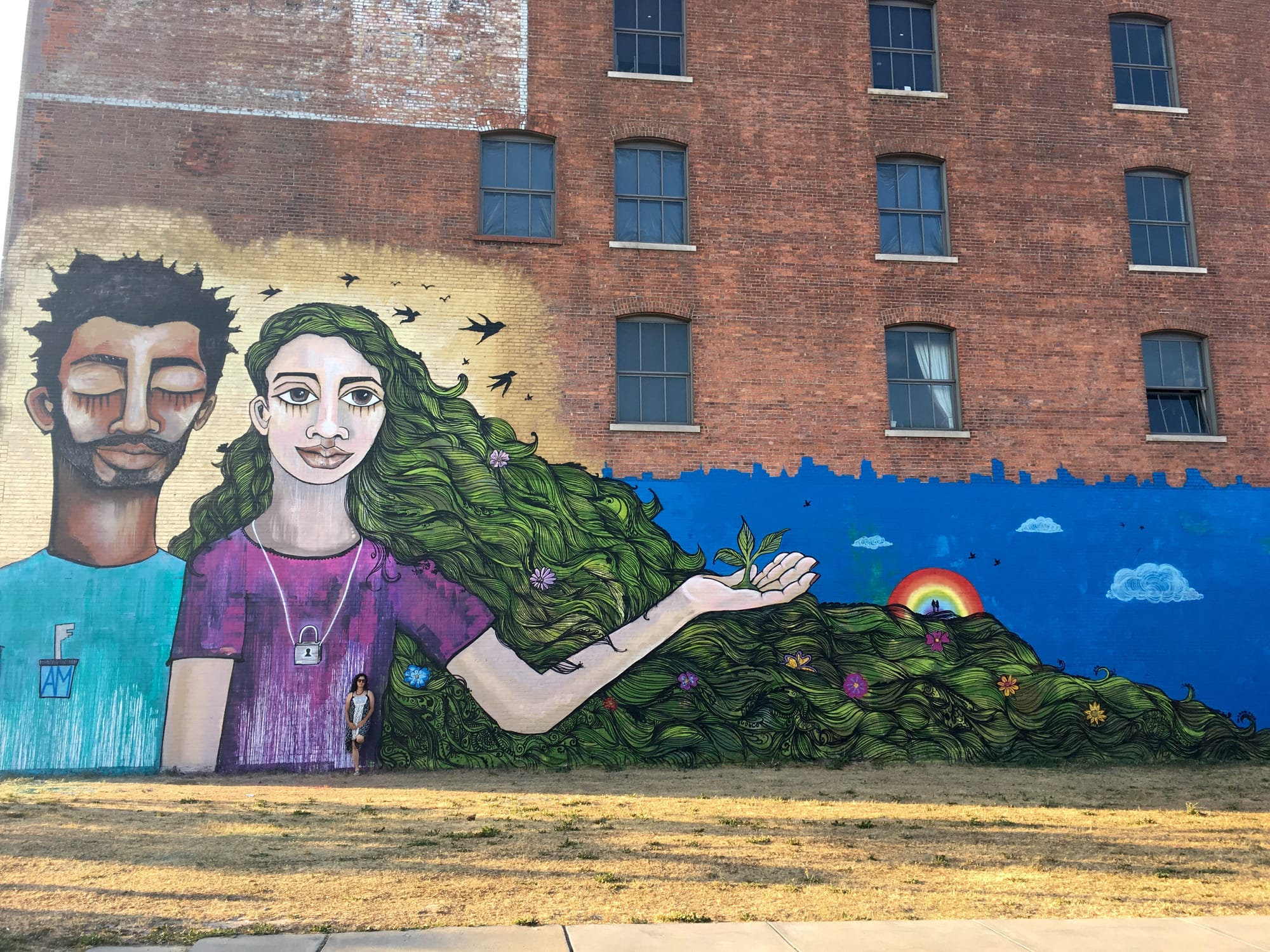
Born and raised in the suburbs of Queens, Alice Mizrachi studied at Parsons School of Design, where the Boston Globe’s illustration team offered her the freelance gig that would kick-start her career. But Mizrachi’s interest in street art far preceded that. She cut her teeth with her older brother’s crew during the birth of hip-hop, steeped in the world of DJ graffiti. These were the New Age ‘80s punk, non-traditional styles, festooned on jackets, cardboard, and jeans. During college, she eagerly traversed the vibrant nooks and crannies of the city’s museums and galleries. On one trip to the freight trains, friends encouraged her to try spray painting. “From there … I kinda fell in love,” she says. “Anything, to me, that looked like I was breaking that stereotype or that taboo or that norm of what a woman should or shouldn’t do, I was on it … not only because it’s cool, but because it defied these ideals of what a woman should do.”
But over time, she grew to realize that “artists who were using aerosol were mostly men because of the danger that came along with doing stuff on the streets that was considered illegal.” And although her crew supported her, she began to notice that her participation was seen as something of an afterthought, if she got invited at all. With this in mind, Mizrachi started doing more on her own “and with the ladies,” eventually developing a collective, Younity, in 2006 by and for women street artists, including Lady Pink, Faith XLVII, Swoon, Diana McClure, OLEK, and Martha Cooper.
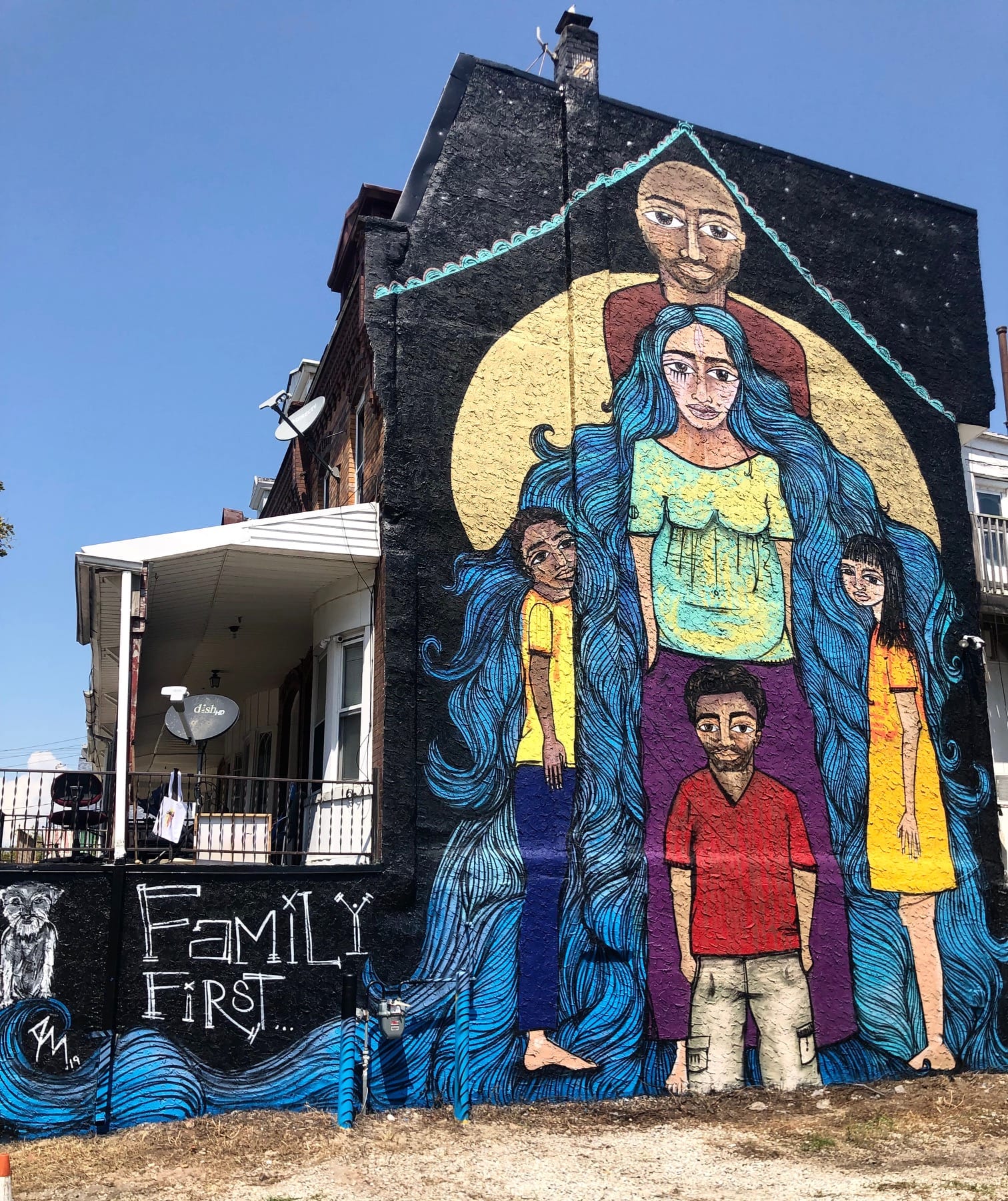
They decided to “create our own walls, and create our own exhibitions, and it’s only gonna be women. And you guys are invited to come and watch. I’m not hating on you guys, but we need a space too … You’ve allowed us space, but now we’re really gonna take the space.” While not a completely new concept (Mizrachi alludes to groups like the Guerrilla Girls), the collective was novel in the context of street art. “At one point we did a show with 60 women, with no budget,” she says. “But I feel lucky that I’m part of that conversation.” Mizrachi has curated a women’s group show now on view in the Bronx, featuring some of the other artists profiled here. Including …
Lady Pink

An Ecuadorian-American street artist who got her start in the 1970s and ‘80s, Lady Pink’s style often merges bodies with architectural elements. When asked about the distinction between art by men versus femme street artists, she responds quickly: “Style is style. If it kicks ass, it kicks ass.”
Initiated at freight trains and on the subways, almost always as the only girl in a crew, Pink claims she just “knew the right people” in the right place at the right time. She admits that “being the token girl” wasn’t always a disadvantage. She talked her way out of handcuffs, patrol cars, and precincts thanks to the cops’ paternalistic mentality. Since then, Pink has starred in the cult classic ‘80s film Wild Style and had her work shown in the Met, the Brooklyn Museum, the Whitney, and Holland’s Groninger Museum.
Still, her experience wasn’t without challenges. Pink, who is bisexual, dated a woman during that time and endured gay-bashing. Later, an anti-vandalism squad targeted her and her husband (street artist Roger Smith of SaneSmith) on several occasions — largely, she says because she is a woman of color — eventually forcing them from the city to a plant-and-animal-filled oasis they built upstate.
Despite the challenges, over the years, Pink has served as a role model, teaching art and aerosol in schools in and around New York. She says that encouraging and educating the next generation has become a cornerstone of her work. She’s proud of painting murals in districts that can’t pay for them. She asserts that for students with less access to art education, just “knowing a real live artist, and even with an unorthodox beginning (especially with that)” can show them that “with passion and dedication, [they] too can be a success.”
Faith XLVII
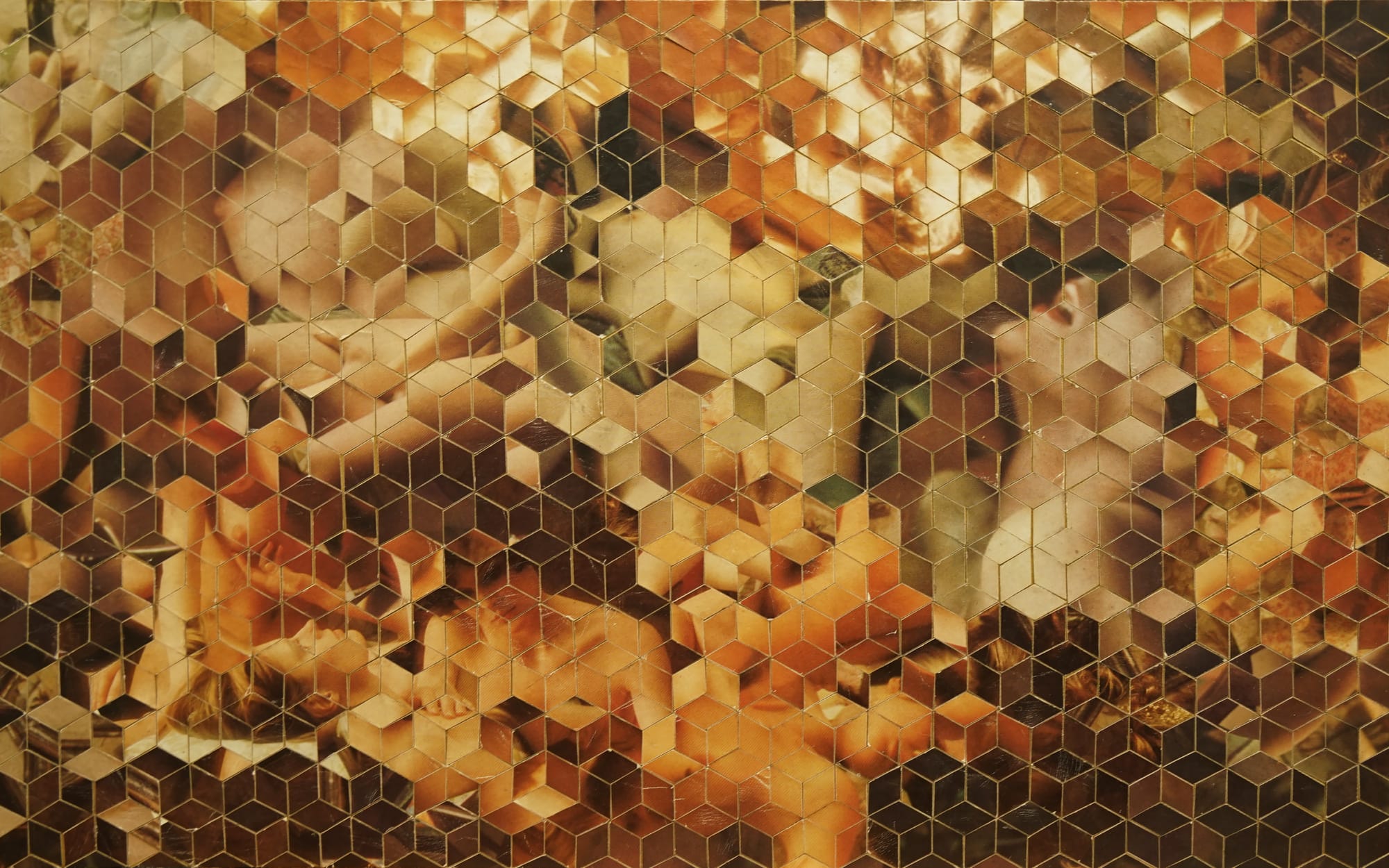
South African artist Faith XLVII works with a variety of media, from interactive light installations in Moscow to projection mapping of animal and human migration patterns in Cape Town. Faith established herself in street art in her boyfriend’s graffiti crew while waitressing or working intermittently as a graphic designer. She laughs as she says that she grew up in the school of hard knocks, taking whatever gigs she could. Eventually, tagging became muralism, and her solo work evolved and went international. Faith analyzes a variety of recurring themes, especially human commonality, which she elucidates through images of hands, maps, dream interpretations, Jungian archetypes, mythology, or projects like 7.83 Hz.
Her practice explores the ephemerality of forgotten spaces, where the photograph becomes the final product. Her other formats investigate tactile or layered mediums, toying with the texture of appropriated paper or books and deconstructed photos. However, Faith has a particular appreciation for public work and the impact it can have, especially when it’s amplified by subtlety, whereupon it can become almost subversive. By allowing people to digest and interpret pieces themselves, she explains, art can enable audiences to grow on their own and in their own time.
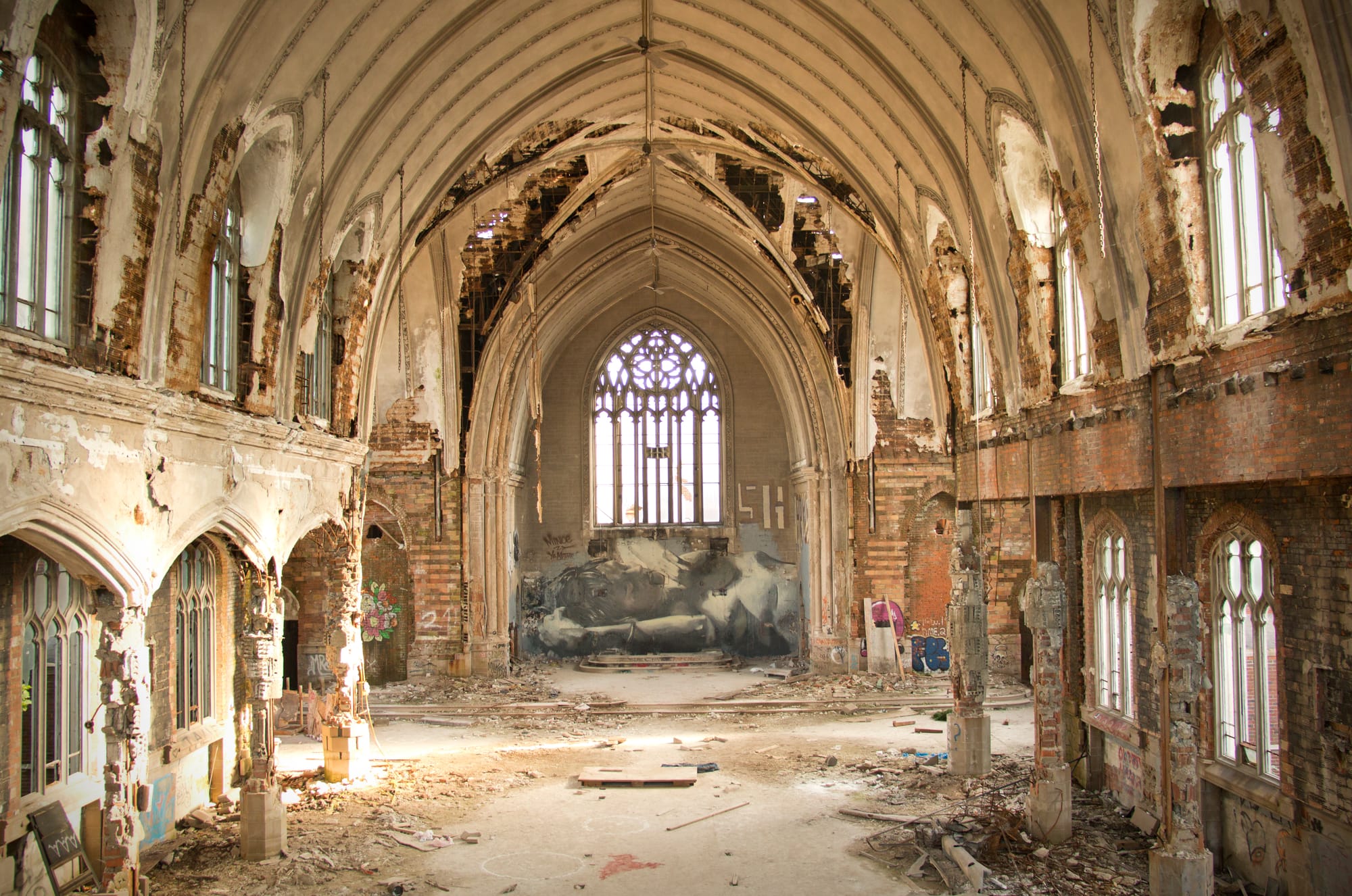
For example, Faith’s large-scale installation on Los Angeles’ Skid Row, Salus Populi Suprema Lex Esto (2018) (the name is Latin for “The welfare of the people shall be supreme law”), is a grayscale rendering of hands folded across a chest overlaid with geometric shapes. It endeavors to give “a monumental space to some of America’s most marginalized people” and serve as a “critique of the capitalistic dream, which lacks institutional empathy for non-active participants.” Yet it requires a thoughtful examination and an independent pursuit of information for viewers to ascertain the full intention.
Swoon
“I started this work out of a desire to contribute, and a desire for the tools of creativity to be used to make people’s lives better in tangible ways,” writes Swoon, aka Caledonia Curry, whose themes span myth, the marriage of reality and whimsy, addiction, and the sacred feminine. She’s recently pivoted toward making short films — a format in which she’s found more creative freedom than the public realm. Still, she says, “when I draw or make art, I’m peering down into the depths of myself … the kind of liminal spaces of consciousness … It’s always been my hope that some glimmer of that gets transmitted” to empower people to access their own. Echoing Pasquini, Swoon corroborates that putting up art in different countries and contexts has been eye-opening. “The place changed the work tremendously. In some neighborhoods, people were intensely hungry for art, and deeply appreciative of almost any gesture. In other places, I was viewed as a vandal and a nuisance.” What’s more, “In some places, the political climate made people fearful about what stories the work contained. In others, people felt deeply identified with and protective of the paste-ups.”
Swoon notes that the male-dominated nature of street art mirrors the trends which pervade “larger spaces with higher stakes,” alluding to the fact that the highest-grossing works at auction are by men. “Western art has had hundreds of years to witness male versions of the world.” Even if divergences might not be easily identifiable, she contends that “there is still something deeply important in allowing a female perspective to really flourish … and then stepping back later and seeing what was significant, what was added, what was deepened by bringing more people into the conversation.”
Socially engaged work also requires inclusion, she stresses, first by getting to know the people and the issues, “and then asking yourself where an outsider’s perspective can intersect with people’s daily concerns in a way that brings about good outcomes.” In areas where street art can precede gentrification, Swoon stresses that artists should make sure that “people who live in the area and have long-term roots there are involved in and directly benefit from the work.” This is what her nonprofit, The Heliotrope Foundation, strives to achieve. Through it, Swoon has helped build earthquake-resistant homes in Haiti and aided revitalization efforts in Braddock, Pennsylvania.
Stephanie Rond
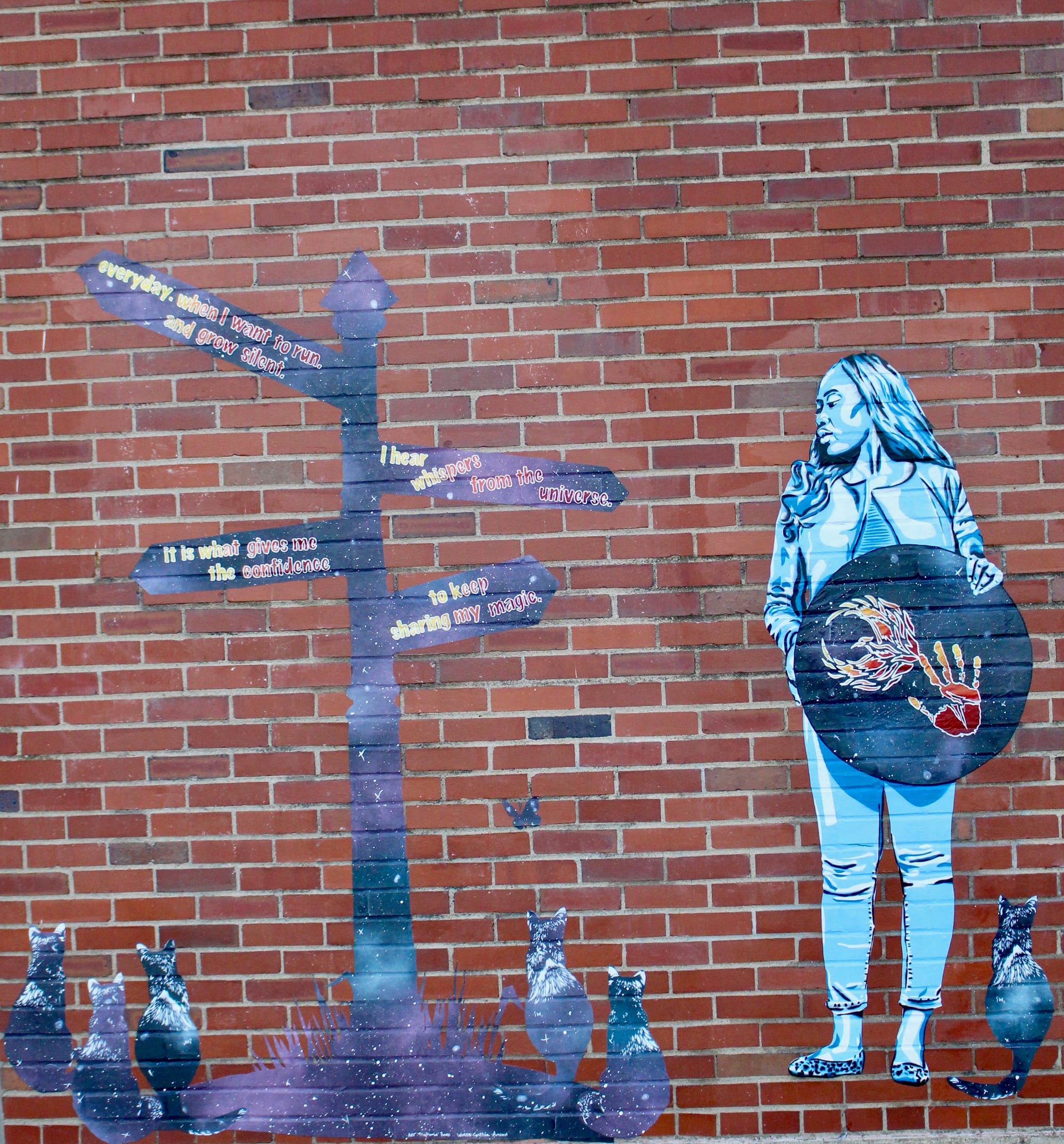
Hailing from Ohio, Stephanie Rond has collaborated on a variety of local art projects, started a gallery (of sorts), and founded the site Women Street Artists (now run with fellow artist and research scientist Amy Leibrand). Rond came to graffiti and public art through a disdain for the sexual objectification of women in advertising. She wanted to foster these conversations and bring the female narrative into outdoor spaces, many of which were built for and designed by men. Rond started doing street art in 2007 anonymously, but it became important to her that audiences — specifically young girls, potentially aspiring artists — knew she was a woman, so she “started creating art as [herself].”
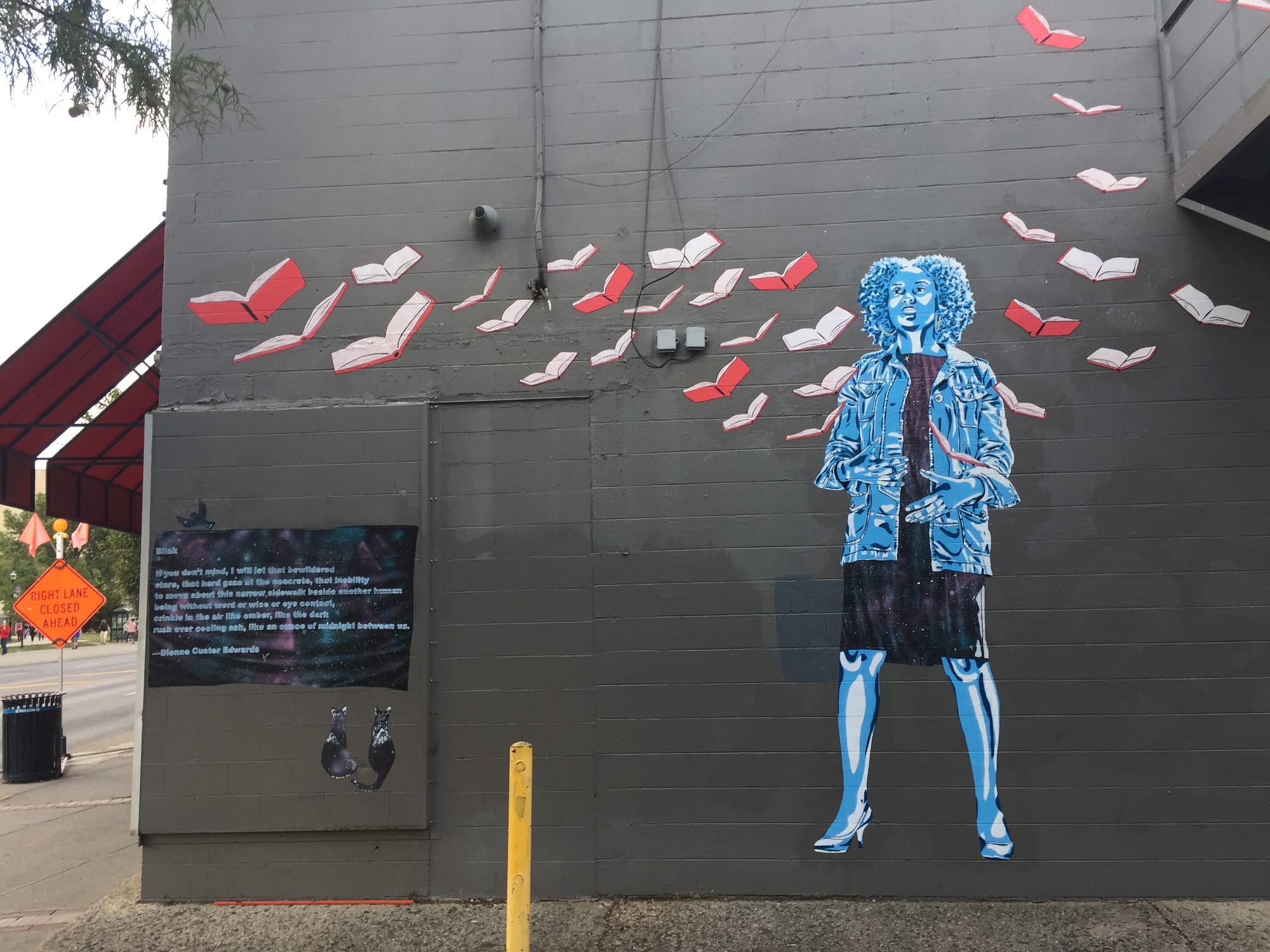
Rond launched Women Street Artists to highlight and elevate her peers. Her most recent series embodies this. It’s an ode to oft-forgotten or under-represented women poets, such as Cynthia Amoah, Dionne Custer Edwards, and Barbara Fant. Her gallery, S.Dot, also engages ideas of access and interrogates concepts of domesticity and class. It uses a dollhouse as its physical stand-in, while all the work is posted online. Based on social media, some people mistakenly believed it to be a life-sized gallery, and when some inquired about having their works featured, she decided to say yes. “Who owns space?” she asks. The gallery she runs at Columbus Metropolitan Library also zeros in on the importance of representation in the public sphere. “Art, it’s a necessity.” Everybody, she asserts, has the right to see and hear reflections of their own voices.
E. Oscar Maynard
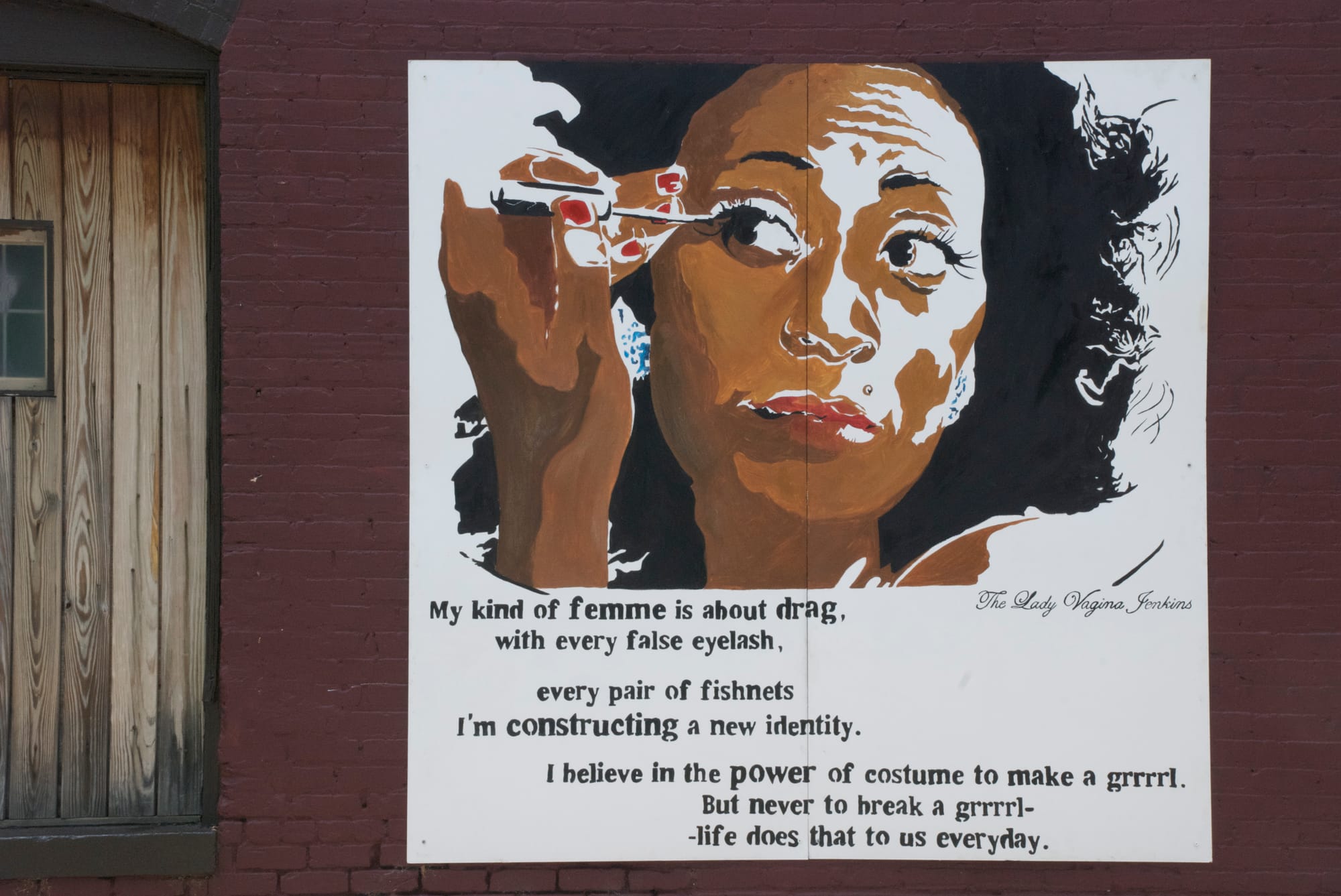
E. Oscar Maynard, who is genderqueer (women-identified with an asterisk, they specify), delves into questions of gender, citizenship, history, and what it means to occupy public space through their work. As their creative practice has evolved, it has involved less spray paint and more paper cutouts. But Maynard lauds how the street and a stencil work as a “portable, contrasty, heavy-hitting medium for a message being in the world in a very particular way.” That “anybody passing by could interact with it” makes street art not only accessible, but also necessary. Their poster Brook Bolen employs a series of questions about (in)visibility aimed at ascertaining how femmes queer femininity. As a masculine-of-center person, Maynard says, they sought to challenge assumptions masculine people make about femininity.
Their portfolio tackles subjects like shame, queerness, and class, elaborating on them to conceive more personal and nuanced narratives. From street art, their “first little art crush,” Maynard added layers, expanding beyond flat graphics to print and composing hybrids, sold at a cost they and people they know can afford. Now Maynard’s paper cuts, drawn with an X-Acto knife, hearken back to stencils. The goal of the work — with their current medium of choice, the letterpress — “take these really hard things and wrap them in poetry” to disarm people when they read them. They want to make little totems “that folks can take and remember that they’re not alone in doing that work or feeling that thing, whatever it is.”
Alice Pasquini
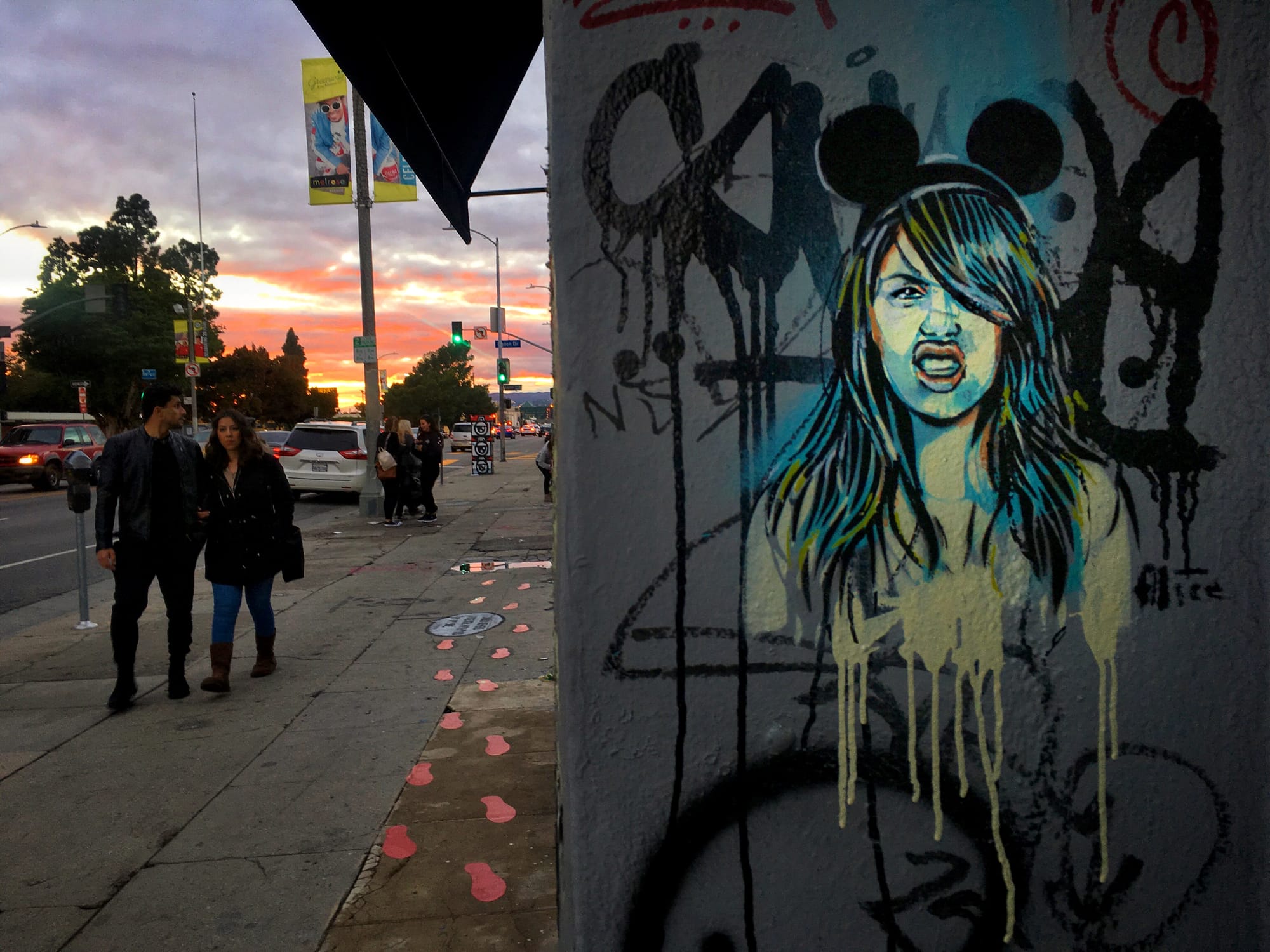
“You can follow your own tracks,” Pasquini says of street art, though she notes that gentrification can follow these same tracks. Neighborhoods transform along with the paint on their walls, she says — a process she keeps in mind when devising. She looks at as a wall not as a blank canvas, but as an object with its own evolution and history. She became intrigued by such interactions, and which ones last. Smaller, more spontaneous pieces tend to linger, as people (not the law, she laughs) respect them more. She conjectures that, by acting as Easter eggs scattered throughout the city that people can connect with on an individual level, diminutive works “break the monotony, breaking the routine somehow.” She hopes her work can in some small yet appreciable way ameliorate people’s day-to-day struggles. For Pasquini, they come not just from infusing cold solid surfaces with beauty and purpose, but also the kinship that facilitates.
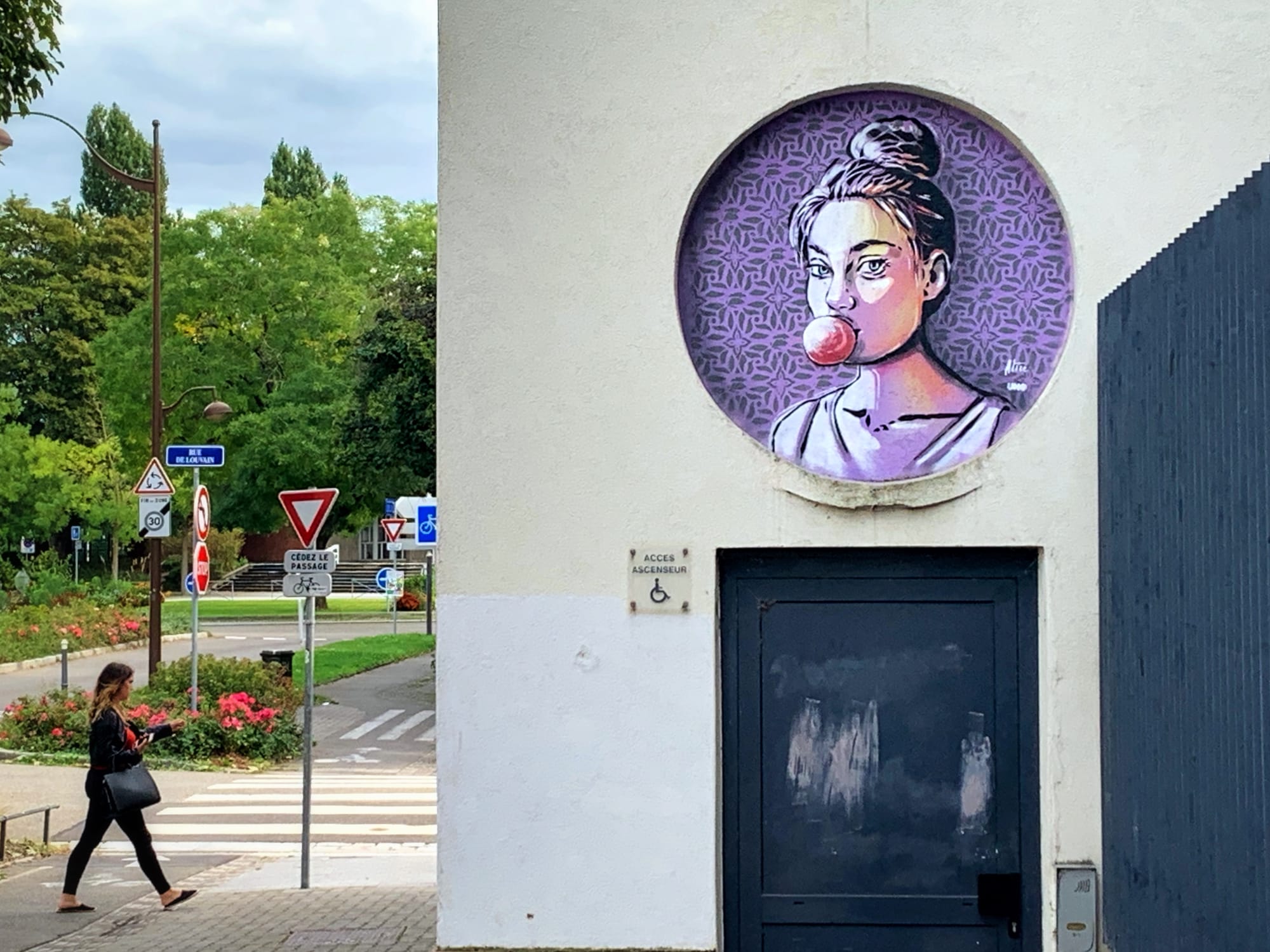
Pasquini studied at Rome’s Academy of Fine Arts. The elite nature of the university propelled her away from it and toward the streets, where she could introduce her craft to everyday people. She started small, anonymous, local. But like Rond, she was disappointed by the lack of women artists in history courses and public spaces, so she ceased to paint anonymously. Upon receiving international commissions, she began noting different reactions based on continent and culture. Contact with people became her focal point. She recalls a man confiding that he’d grown vegetables during the war on land below where she was painting, or a family inviting her inside for coffee while adorning their building’s facade. Now, Pasquini strives to humanize cities, depicting private moments for public audiences to illustrate interconnection. “The more and more I travel, the more I understand that human feelings are the same.” People just want to recognize themselves.
